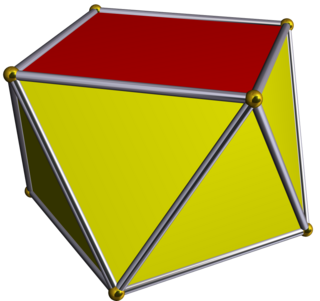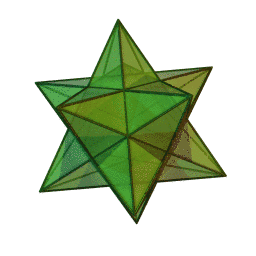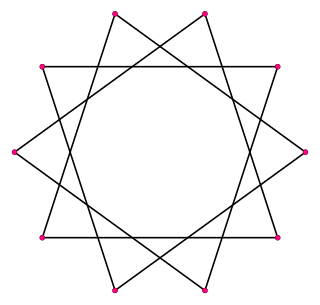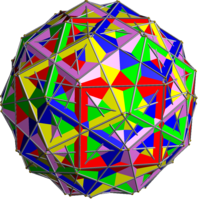In geometry, a polyhedral compound is a figure that is composed of several polyhedra sharing a common centre. They are the three-dimensional analogs of polygonal compounds such as the hexagram.
20 (twenty) is the natural number following 19 and preceding 21.

In geometry, the rhombicosidodecahedron is an Archimedean solid, one of thirteen convex isogonal nonprismatic solids constructed of two or more types of regular polygon faces.
In chemistry, a mixture is a material made up of two or more different chemical substances which can be separated by physical method. It's an impure substance made up of 2 or more elements or compounds mechanically mixed together in any proportion. A mixture is the physical combination of two or more substances in which the identities are retained and are mixed in the form of solutions, suspensions or colloids.
75 (seventy-five) is the natural number following 74 and preceding 76.

In geometry, a uniform polyhedron has regular polygons as faces and is vertex-transitive—there is an isometry mapping any vertex onto any other. It follows that all vertices are congruent. Uniform polyhedra may be regular, quasi-regular, or semi-regular. The faces and vertices don't need to be convex, so many of the uniform polyhedra are also star polyhedra.

In geometry, a triangular prism or trigonal prism is a prism with 2 triangular bases. If the edges pair with each triangle's vertex and if they are perpendicular to the base, it is a right triangular prism. A right triangular prism may be both semiregular and uniform.

In geometry, the great dodecahedron is one of four Kepler–Poinsot polyhedra. It is composed of 12 pentagonal faces, intersecting each other making a pentagrammic path, with five pentagons meeting at each vertex.

In geometry, the small stellated dodecahedron is a Kepler-Poinsot polyhedron, named by Arthur Cayley, and with Schläfli symbol {5⁄2,5}. It is one of four nonconvex regular polyhedra. It is composed of 12 pentagrammic faces, with five pentagrams meeting at each vertex.

The compound of five cubes is one of the five regular polyhedral compounds. It was first described by Edmund Hess in 1876.
In geometry, a uniform polyhedron compound is a polyhedral compound whose constituents are identical uniform polyhedra, in an arrangement that is also uniform, i.e. the symmetry group of the compound acts transitively on the compound's vertices.

This uniform polyhedron compound is a composition of 2 icosahedra. It has octahedral symmetry Oh. As a holosnub, it is represented by Schläfli symbol β{3,4} and Coxeter diagram .

This uniform polyhedron compound is a composition of 5 small stellated dodecahedra, in the same arrangement as in the compound of 5 icosahedra.
The Gmelin database is a large database of organometallic and inorganic compounds updated quarterly. It is based on the German publication Gmelins Handbuch der anorganischen Chemie which was originally published by Leopold Gmelin in 1817; the last print edition, the 8th, appeared in the 1990s. Although published over many decades, the printed series was not uniform in coverage or currency. Some elements are represented only by decades-old and not updated slim summary volumes. Others have numerous supplements. Most later supplement volumes focused on an element's organic complexes. Each volume lists its literature coverage date.

In geometry, a decagram is a 10-point star polygon. There is one regular decagram, containing the vertices of a regular decagon, but connected by every third point. Its Schläfli symbol is {10/3}.

In geometry, a dodecagram is a star polygon or compound with 12 vertices. There is one regular dodecagram polygon. There are also 4 regular compounds {12/2},{12/3},{12/4}, and {12/6}.










